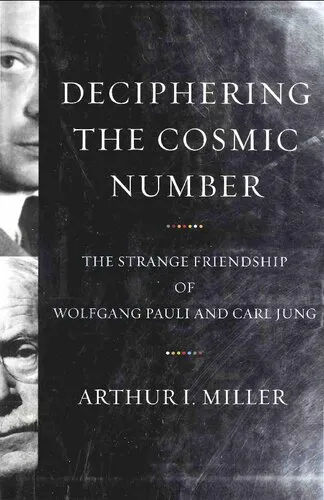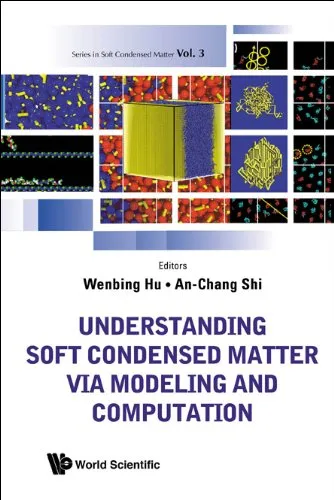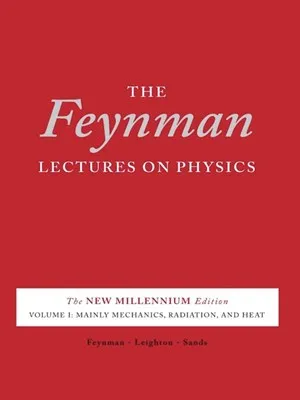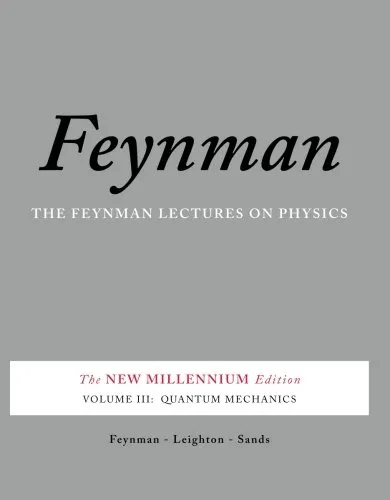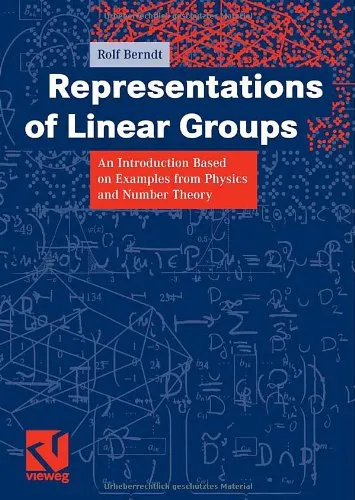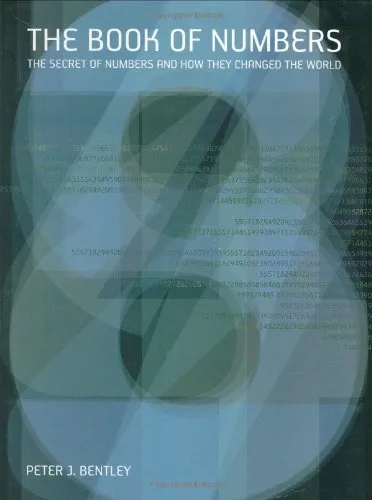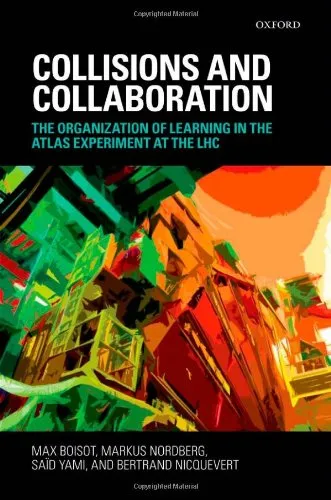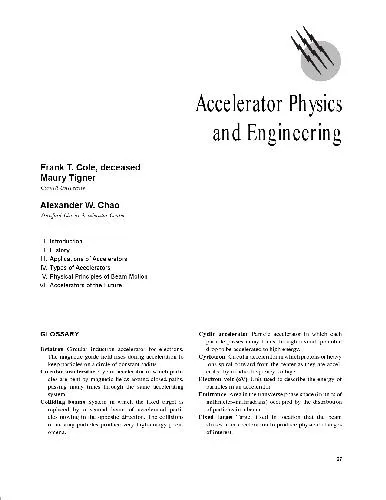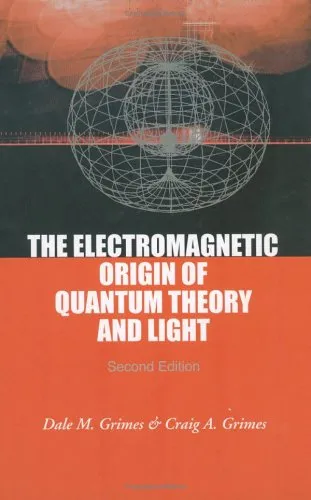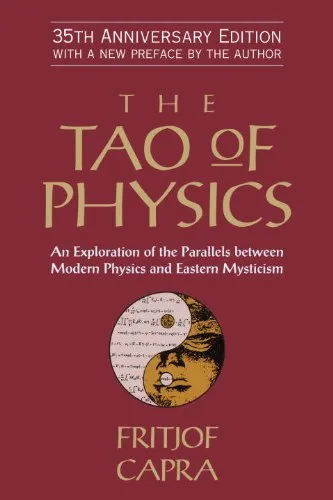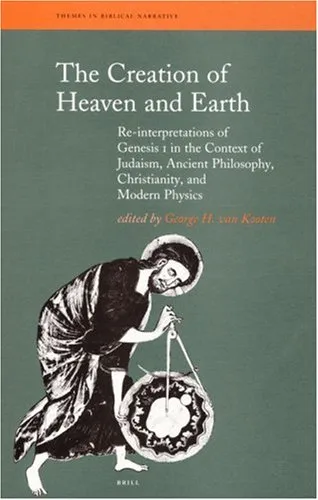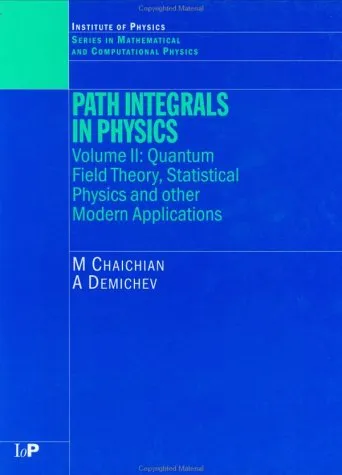Deciphering the Cosmic Number: The Strange Friendship of Wolfgang Pauli and Carl Jung
4.0
بر اساس نظر کاربران

شما میتونید سوالاتتون در باره کتاب رو از هوش مصنوعیش بعد از ورود بپرسید
هر دانلود یا پرسش از هوش مصنوعی 2 امتیاز لازم دارد، برای بدست آوردن امتیاز رایگان، به صفحه ی راهنمای امتیازات سر بزنید و یک سری کار ارزشمند انجام بدینRelated Refrences:
معرفی کتاب: Deciphering the Cosmic Number: The Strange Friendship of Wolfgang Pauli and Carl Jung
کتاب Deciphering the Cosmic Number که به قلم آرتور آی. میلر نوشته شده است، داستانی شگفتانگیز از ارتباط علمی و روانشناختی میان دو شخصیت برجسته قرن بیستم، یعنی ولفگانگ پائولی، فیزیکدان مشهور، و کارل یونگ، روانکاو نوآور، میباشد. این کتاب عمیقاً به کاوش در مرزهای علم، روانشناسی، و اسرار هستی میپردازد و خواننده را در دنیایی پر رمز و راز و پراز سؤالات بزرگ انسانی غرق میکند.
خلاصهای از کتاب
داستان کتاب با معرفی ولفگانگ پائولی آغاز میشود، یکی از بزرگترین نوابغ فیزیک کوانتومی که در دوران کاری خود با مسائلی همچون تقارن و اصول بنیادی طبیعت درگیر بود. از سوی دیگر، کارل یونگ، بنیانگذار روانشناسی تحلیلی، همواره به دنبال راهی برای درک عمیقتر روان انسان و رابطه آن با رازهای کیهان بود. نقطه تلاقی این دو شخصیت از جایی آغاز میشود که پائولی، بر اثر خوابهای عجیب و پریشان، به جستجوی راهنمایی از یونگ میپردازد.
ارتباط میان آنها فراتر از یک گفتگوی ساده میان علم و روانشناسی است. این دو در تلاش برای یافتن معنای زندگی و کشف قوانین پنهانی جهان، از مفاهیمی مانند Synchronicity و ارتباط اعدادی مانند عدد کیهانی 137 استفاده میکنند. همکاری آنها به مطالعه ارتباطات میانشناختی روان و فیزیک میپردازد و پایهگذار مکتبی نوین از تفکر علمی-روانشناختی میشود.
نکات کلیدی کتاب
- ارتباط میان علم فیزیک و روانشناسی از دیدگاه دو شخصیت پیشرو
- تحلیل و بررسی نمادین خوابها و مفاهیم روانی در کنار دادههای علمی
- کاوش در مباحثی مانند Synchronicity و عدد 137
- نحوه شکلگیری افکار خلاقانه در تقاطع علم و هنر
- تأثیر فلسفه و متافیزیک بر علم و روانشناسی قرن بیستم
جملات مشهور از کتاب
"The number 137 is not just a scientific curiosity, it symbolizes a deeper connection between our psyche and the cosmos."
"In dreams, we find the riddles of the universe reflected in the smallest corners of our mind."
چرا این کتاب اهمیت دارد؟
کتاب Deciphering the Cosmic Number صرفاً یک روایت تاریخی یا توصیف علمی نیست، بلکه پلی است میان رشتههای علمی، روانشناختی و حتی فلسفی. این اثر نشان میدهد که چگونه درک پدیدههای فیزیکی و روانی میتواند ما را به یک دیدگاه جامعتر از جهان برساند. یونگ و پائولی هردو مرزهای معمولی رشتههای خود را شکسته و مفاهیمی همچون Synchronicity را مطرح کردند که هنوز هم الهامبخش تحقیقات مدرن در روانشناسی و فیزیک است.
این کتاب برای هر کسی که به دنبال فهم عمیقتری از ارتباطات پیچیده میان علم، فلسفه و روانشناسی است، جذاب و ارزشمند خواهد بود. همچنین، به خوانندگانی که علاقهمند به تاریخچه روابط علمی و فکری هستند، توصیه میشود تا از این اثر بهره ببرند.
Introduction to "Deciphering the Cosmic Number: The Strange Friendship of Wolfgang Pauli and Carl Jung"
"Deciphering the Cosmic Number" is an exploration into one of the most fascinating intellectual collaborations of the 20th century: the friendship between Wolfgang Pauli, the groundbreaking physicist, and Carl Jung, the influential psychologist and founder of analytical psychology. Authored by Arthur I. Miller, the book delves into their shared quest to answer profound questions about the universe, consciousness, and the nature of reality itself. At the heart of the book is the mysterious "137"—a number that permeates both physics and mysticism, one that Pauli and Jung believed held the key to unifying science and spirituality.
Through meticulous research and a narrative that seamlessly intertwines history, science, and psychology, Miller captures not only the intellectual depth of Pauli and Jung but also the human element of their relationship—marked by mutual curiosity, admiration, and the occasional clash of worldviews. Their friendship and correspondence spanned years, and their discussions tackled recurring motifs like synchronicity, quantum mechanics, and archetypes within Jungian psychology. This convergence of two disparate disciplines—modern physics and depth psychology—forms the crux of the story, making it a unique and thought-provoking read for those interested in the interplay of science and the humanities.
This book is not just an academic treatise. It is an engaging narrative that examines the lives of two extraordinary individuals and the era they shaped, bringing us closer to understanding humanity's eternal quest to make sense of its place in the universe. Below, we delve into various aspects of the book, providing you with a detailed summary, key insights, memorable quotes, and an explanation of why this book has significant value.
Detailed Summary of the Book
At the core of "Deciphering the Cosmic Number" is the intriguing context of Wolfgang Pauli's profound existential struggles and Carl Jung's attempts to help through his psychological insights. Pauli, a brilliant yet tormented physicist who contributed significantly to quantum mechanics and received the Nobel Prize in Physics, sought to understand the fundamental principles underlying the cosmos. Despite his rigorous scientific mind, Pauli experienced recurring dreams and synchronicities, which he believed held deeper meanings about reality. These experiences drew him to Jung, whose exploration of the collective unconscious and archetypes resonated deeply.
The book chronicles their efforts to bridge their respective disciplines. For Pauli, the concept of synchronicity—a term coined by Jung to describe meaningful coincidences—offered a way to connect his scientific pursuits with deeper metaphysical truths. For Jung, Pauli's meticulous dream diaries and analyses became a crucial part of his work on the psychological significance of symbols and archetypes.
A central theme in the book is the cosmic number "137," which represents the fine-structure constant in physics—a dimensionless number that explains the strength of the electromagnetic force. Pauli was obsessed with this number, believing it held the secret to understanding the universe. Jung, in turn, interpreted Pauli's fixation through the lens of archetypal psychology, seeing it as a symbol of unity between the physical and spiritual realms. Their conversations around 137 illustrate how science and mysticism, far from being contradictory, could instead complement each other when approached with open minds.
Arthur I. Miller skillfully weaves together the biographies of both men, their groundbreaking contributions to their fields, and their collaborative attempts to reconcile radically different ways of knowing the world. The book also provides historical context, addressing the intellectual ferment of the early 20th century and the societal challenges that shaped their lives and work.
Key Takeaways
- The interplay between science and psychology can yield profound insights into universal questions of existence.
- Wolfgang Pauli's dreams provided unique perspectives on his scientific concerns, demonstrating the connection between the unconscious and intellectual curiosity.
- The number "137" serves as a symbol of unity, bridging the physical domain of physics with the metaphysical realm of synchronicity and psychology.
- The collaboration between Pauli and Jung highlights the importance of interdisciplinary thinking in advancing knowledge.
- Even the most rigorous scientific analysis can coexist with a sense of wonder and engagement with the unknown.
Famous Quotes From the Book
"Scientists and mystics alike seek the unity of existence, but through different languages."
"The cosmic number 137 is not just a scientific constant but a window into the deeper order of the universe."
"Synchronicity is not a denial of causality—it is a reminder of the mystery that goes beyond it."
Why This Book Matters
"Deciphering the Cosmic Number" is more than just a historical examination of two remarkable men and their friendship. It is a testament to the power of interdisciplinary thought, showing how human creativity and curiosity can overcome the boundaries of traditional disciplines. By blending physics, psychology, philosophy, and mysticism, Miller offers a profoundly new way of looking at the world, reminding readers that science and spirituality are not mutually exclusive but rather complementary approaches to understanding reality.
In an age often dominated by hyper-specialization, this book demonstrates the importance of stepping outside one’s intellectual comfort zone. It challenges readers to think critically about the separation of science and the humanities, encouraging a holistic approach to tackling the great mysteries of life. For anyone interested in the intersection of science,
دانلود رایگان مستقیم
شما میتونید سوالاتتون در باره کتاب رو از هوش مصنوعیش بعد از ورود بپرسید
دسترسی به کتابها از طریق پلتفرمهای قانونی و کتابخانههای عمومی نه تنها از حقوق نویسندگان و ناشران حمایت میکند، بلکه به پایداری فرهنگ کتابخوانی نیز کمک میرساند. پیش از دانلود، لحظهای به بررسی این گزینهها فکر کنید.
این کتاب رو در پلتفرم های دیگه ببینید
WorldCat به شما کمک میکنه تا کتاب ها رو در کتابخانه های سراسر دنیا پیدا کنید
امتیازها، نظرات تخصصی و صحبت ها درباره کتاب را در Goodreads ببینید
کتابهای کمیاب یا دست دوم را در AbeBooks پیدا کنید و بخرید
1308
بازدید4.0
امتیاز50
نظر98%
رضایتنظرات:
4.0
بر اساس 0 نظر کاربران
"کیفیت چاپ عالی بود، خیلی راضیام"
Questions & Answers
Ask questions about this book or help others by answering
No questions yet. Be the first to ask!
